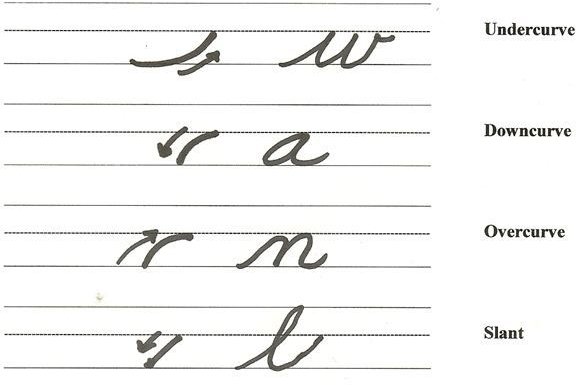Cursive Handwriting Guide: Tips for Students and Parents
Handwriting habits - good or bad - have an impact on how your written work is perceived. For students, handwriting can also affect how homework and other written assignments are graded. Unfortunately, good handwriting does not come naturally for many students. This cursive handwriting guide will help you or your child develop good habits.
Helping Your Child at Home
Before you begin working with your child, it is important that you first identify which handwriting style your school district expects their students to use. D’ Nelian and Zaner-Bloser are two popular cursive writing programs often used by schools. If your child is ready to write, but does not yet attend school or has not yet reached the grade level where cursive handwriting is taught, contact the school in your area for a cursive handwriting guide using the preferred style. If you are a homeschooling parent, then the decision of which cursive handwriting guide to use is left entirely up to you. Take some time to familiarize yourself with the various options before making a decision.
Writing Positions
Maintaining a good writing position is an important component to proper letter size, formation and spacing. Here are some important tips to get you started:
- Sit comfortably, but maintain good posture.
- Lean forward slightly.
- Leave feet flat on the floor.
- Have both arms resting on the table or desk while you work.
- Hold the pencil between your thumb and the first two fingers of your writing hand.
- Maintain constant pressure when holding the pencil.
- Be certain your grip is not too tight, and not too loose.
- If you are a right-handed writer, position the paper so that the top is slanting to your left.
- If you are a left-handed writer, position the paper so that the top is slanting to your right.
The Four Key Components of Legibility
Let the four “S” components of legibility in cursive handwriting guide you:
1. Size - This refers to the letters in relation to each other and to the lines or spaces on the paper.
- Tall letters should touch the headline, or top line position, of the paper.
- Short letters should touch the mid line, or center line position, of the paper.
- Some letters actually go below the baseline, or bottom line position.
- Depending on their position, similar letters should be uniform in height.
**
2. Shape - There are four basic shapes, or motions, to guide your cursive handwriting:
- undercurve (this stroke swings up).
- downcurve (this stroke dives down).
- overcurve (this stroke bounces up).
- slant (this stroke slides at an angle).
3. Slant - All letters in cursive handwriting slant. Here are some important things to remember:
- Slants should be uniform.
- To check for uniformity, draw an imaginary straight line through the center of each letter, from the top to the bottom. If the slant is uniform, all of the lines should be parallel.
- Proper hand position can improve the degree of slant.
4. Spacing - For increased legibility, there should be consistency in the spacing between letters, words and sentences throughout the writing. In other words, the spacing between letters should all be the same. The spacing between words should be consistent, and slightly larger than the spacing between the letters. The spacing between sentences should be uniform, and slightly larger than the spacing between words.
- One of the biggest challenges for students is to maintain consistent spacing between words. To help with this, encourage the child to follow the generally accepted rule of keeping one finger space between each written word. Students can actually use their own finger to check and self-correct. Similarly, a Popsicle stick may be used in place of a finger.
Remember, a person’s handwriting ability is something that develops gradually. While this cursive handwriting guide will help to establish basic cursive handwriting habits, practice is also a necessary component of improving fluency and legibility.
References
- The materials and information offered in this article are the author’s own, and are based on the author’s extensive experience as a classroom teacher and homeschooler.
